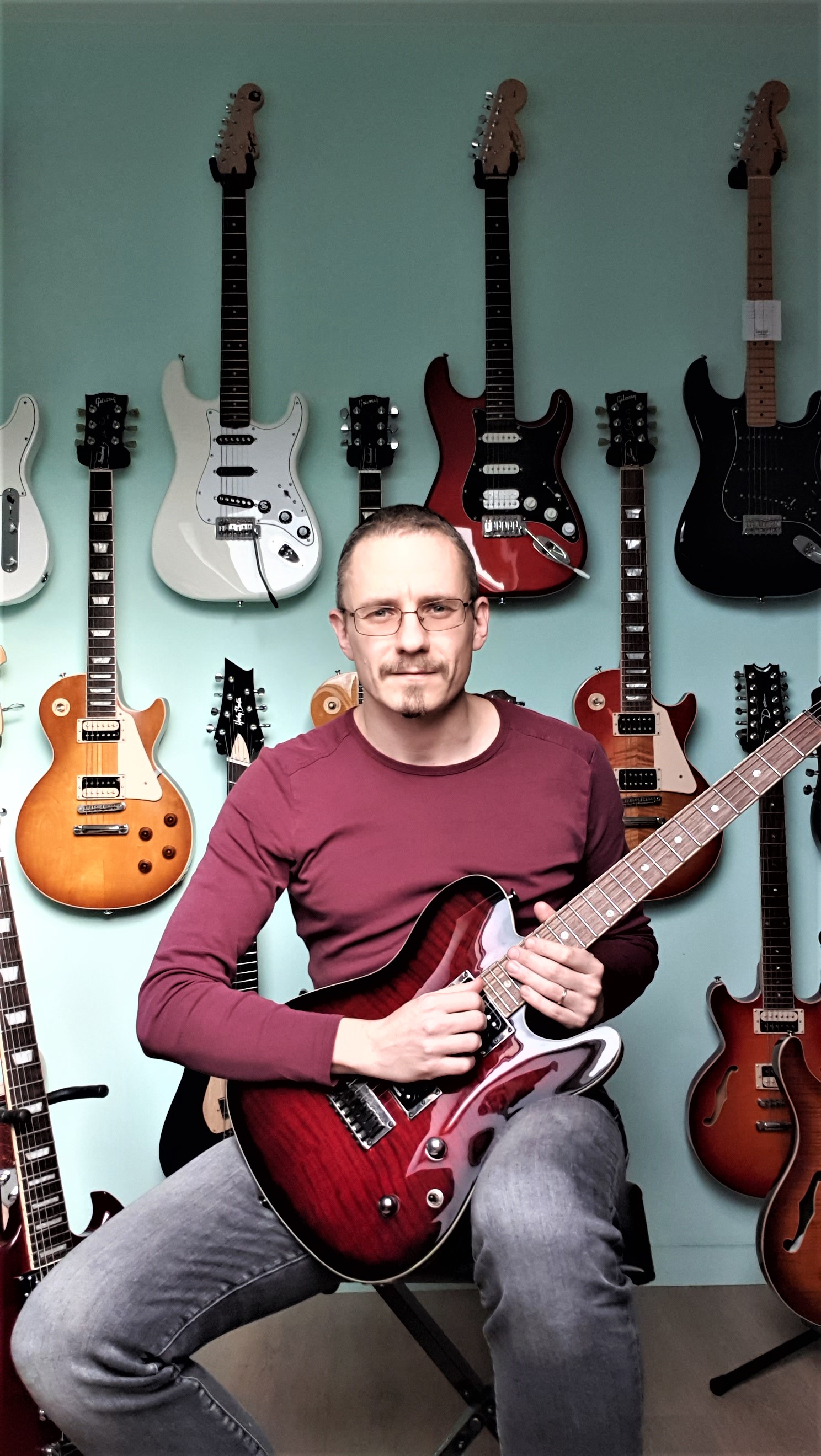Zoltan Precsenyi

Courses: Master of the Modes, Complete Chord Mastery
Have you ever been bored out of your mind, or confused to no end by condescending solfege lectures designed to impress on you that music theory is this gigantic rulebook that any self-respecting musician must spend years learning by heart and then religiously regurgitate? Or have you ended up thinking “to hell with theory, I’ll just follow my instinct”?
Well, I’ve been in both of those places, and they both sucked. And then I discovered musictheoryforguitar.com, quickly signed up for Master of the Modes, and went on to Complete Chord Mastery, picking up a bunch of free goodies on the way like Chord Tone Soloing, and some additional courses like Scales for Blues Guitar.
The only thing I regret now is the 20 years I wasted noodling around the fretboard without knowing what music was actually happening on it, or why everything always sounded the same.
Tommaso’s courses are pure musical gold. I lost count of the a-ha moments I’ve had going from one amazing eye- (and ear-) opening concept to the next. Many of the things I’ve discovered seem so simple and obvious in retrospect, and yet, hadn’t Tommaso made them so for me, I probably would never have realized any of it.
Have you ever noticed that the Mixolydian scale is NOT “seven frets”, but actually just one semitone away from the Dorian one? Can you explain why that one nuance causes one mode to sound brighter, and the other darker? And can you visualize that explanation on the fretboard? Do you know what Dorian, Aeolian and Phrygian scales have in common?
Believe me, the answer to this one will blow your mind and instantly transform your soloing.
Or have you ever noticed that you can build major and minor 7 chords by stacking two power chords just a frets apart? If you wonder how bands like Iron Maiden and Dream Theater achieve those harmonic textures while sounding good even with loads of distortion, well Tommaso might not tell you all the recipe to the secret sauce, but he will guide you to figure it out by yourself.
The fact of the matter is that, as Tommaso eloquently demonstrates, music theory is nothing like a rulebook. Rather it is an atlas mapping out and guiding you to all the musical ideas that have been tested and proven so far. And since each one idea triggers at least three further ones, how many new pages you’ll add to the atlas is really up to your creativity.
With Tommaso’s courses, you’ll get none of the self-aggrandizing bullshit that so often passes for “music theory expertise” all over the internet. What you get is hands-on practical tutoring, instantly and organically integrating the mental understanding of what’s going on with the physical experience of making it happen on your instrument.
One word of caution though: a lot of the mysticism of amazing-sounding music will be gone once you understand how it’s done and once you’re able to perform the same magic tricks too.
But you’ll get so much fun out of it, and it’ll be your turn to amaze and mystify everybody else. Plus you’ll find yourself not just a better guitar player, but also a much more accomplished listener of all sorts of genres, even way out of your current comfort zone.
And if what holds you back is cost, just think about the budget you spend on all that guitar gear that keeps piling up without ever making you the better musician you really want to become. That money will be much better invested in your skills, and you’ll be able to make a lot more out of the gear you already own.